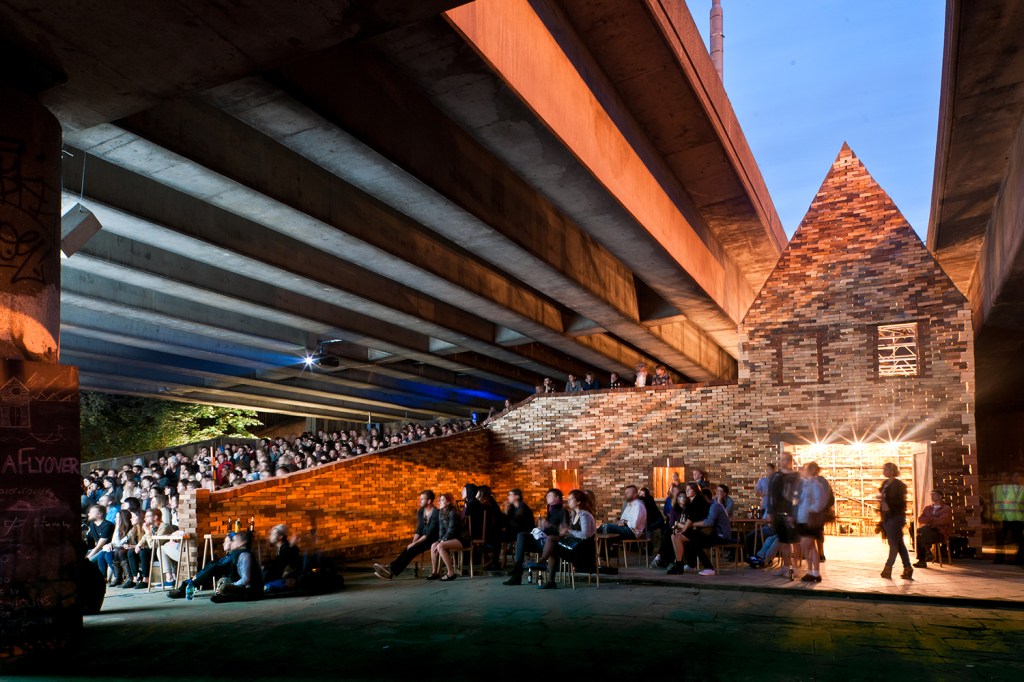The news that London-based firm Assemble won the Turner Prize earlier this month is, though not unexpected, welcome news. It shows that good work in the visual arts, whatever the medium, form, or nature of the makers’ degrees, can receive recognition. It also makes it clear that there are many ways to make good architecture beyond designing skyscrapers, expensive homes, or museums.
Assemble is a collective of 18 individuals with different backgrounds. They range from artists to sociologists and historians to architects. Their practice combines aspects of neighborhood activism, social research, building practice, and what we might think of as sculpture. They eschew foregrounding personalities and do not think of themselves as just spitting out ideas: They work together with the communities in which they work to produce their projects, using the occasion to train local collaborators in building trades and other crafts.
In many ways Assemble and its members are heirs to England’s arts & crafts tradition, which reaches back to the communities of makers William Morris, C.R. Ashbee, and others founded in the second half of the 19th century based on the ideas of John Ruskin. The group’s work is also thoroughly contemporary, offering architecture’s answer to the Maker Movement that has spread throughout so many other aspects of the construction of the artifacts of everyday life by combining technology and craft. Finally, it is also part of the tactical urbanism movement in which practitioners such as the collective ROTOR in Belgium or Urban Think Tank, now based in Zurich, find ways to reveal, open up, and extend those qualities of urban life that too often remain closed within our buildings or under our streets.
Made out of simple materials and put together in equally straightforward ways, Assemble’s work starts from standard ways things are made—and what you might call the vernacular—then warps, twists, and liberates those traditions so that they are appropriate for multicultural society and situations in which technology and pop culture have to be integrated with daily life.
I love the fact that Assemble finds unused spots such as the undersides of highways (in Folly for a Flyover, a temporary installation), does almost nothing to make town squares work as truly useful and joyful public spaces (New Addington Central Parade), uses local materials down to the point of gathering rubble and gravel from an empty site to make walls (OTO Café) and makes concrete improvements to housing stock that do not gentrify, but let local inhabitants live better lives (Granby Four Streets) on site. I like that they do it in such a way that the results, whether along the way in the process drawings and models they make, or in their final built form, are beautiful. Good work does not have to be so either in a social or an aesthetic sense: It can and must be both.
The Turner Prize—which has a track record of finding and awarding some of the best artists not only in the United Kingdom but in the world—obviously recognized these achievements, but, in awarding the prize, also pointed out that making art remains the production of artifacts that use their craft in whatever medium that compels both the eye and the intellect. The jury cared little what the medium was; it just saw good work.
The Turner Prize jury made it clear that architecture is a cultural pursuit—as opposed to building, which is a technical one—that you can carry out at the very highest level. It also encouraged current and future designers who have the skills and knowledge to make architecture that there are ways that they can not only accomplish their work, but also receive recognition and recompense at the very highest levels.
Watch the video below to see Assemble’s reaction to the Turner Prize nomination:
